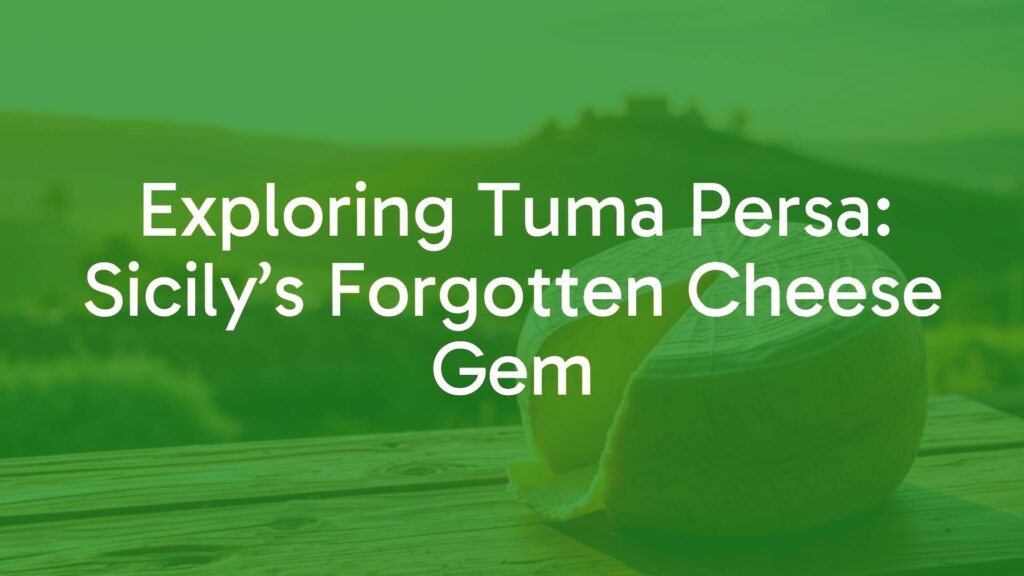An Introduction to Tuma Persa
Tuma persa is a rare and enigmatic Italian cheese hailing from the heart of Sicily. Known for its unique origin story and singular production process, tuma persa is sometimes referred to as the “lost cheese,” alluding both to its name (“tuma” means cheese, and “persa” translates as lost) and its near disappearance from modern culinary traditions. This semi-hard cheese has a subtle, evolving flavor profile that draws on the rich dairy heritage of the Sicilian countryside.
Distinctive Characteristics
Tuma persa is typically a large, rustic wheel, ranging in color from pale straw to deep gold as it ages. Its texture strikes a balance between soft and firm, with a delicate aroma possessing grassy and slightly earthy undertones. Unlike more pungent or salty Italian cheeses, tuma persa is prized for its gentle, creamy tang combined with a touch of savory complexity as it matures.
Historical Background
The cheese’s story is as layered as its flavor, rooted in rural Sicilian cheese-making traditions dating back several centuries. Originally, tuma persa was crafted primarily by local shepherds from a blend of sheep’s and cow’s milk, sometimes even goat’s milk. In earlier times, some wheels of cheese were “lost” or set aside to mature in natural caves or storerooms, developing their unique flavor by chance—a tradition that inspired both its name and its distinctive production method today.
Production and Maturation
Tuma persa’s manufacture still follows time-honored ways. Fresh milk is gently heated and coagulated, after which the curds are hand-ladled into molds. The cheese is then pressed and brined, often lightly sprinkled with olive oil or rubbed with salt. The most distinctive phase is its aging: originally, wheels were ‘forgotten’ in storerooms or caves to mature for several months or longer, acquiring unique aromas depending on the cave’s microflora and other environmental factors. Today, artisanal producers seek to replicate this natural process, sometimes leaving the cheese in controlled environments longer than typical to foster depth of flavor.
Serving Suggestions and Enjoyment
Tuma persa is traditionally tasted as a table cheese, sliced thickly and savored with rustic Sicilian breads. Its gentle flavor makes it suitable as an appetizer or part of an antipasto platter. Locals often enjoy it with seasonal fruits such as figs or pears, or paired with honey and regional wines like Etna Rosso or Nero d’Avola. For a more substantial dish, tuma persa may be cubed into salads or melted lightly over grilled vegetables, imparting richness without overwhelming other ingredients.
Cultural Context and Contemporary Usage
Though long overlooked, tuma persa has experienced a resurgence thanks to small-scale Sicilian dairies and cheese enthusiasts dedicated to reviving heritage foods. It is now a treasured symbol of Sicily’s rural past and sustainable, craft-focused food culture. Festivals and tastings focused on rare Sicilian cheeses often highlight tuma persa, and local chefs are finding inventive ways to incorporate it into modern Mediterranean cuisine.
Variations and Pairings
While classic tuma persa is made from sheep’s milk or a blend with cow’s milk, some rare versions made exclusively from goat’s milk can occasionally be found, boasting a slightly sharper edge. Because its flavor is so delicate, tuma persa pairs wonderfully with light, fruity white wines or even dry Sicilian sparkling varieties. For an authentic experience, enjoy it alongside other Sicilian specialties like olives, sun-dried tomatoes, and marinated artichokes.

